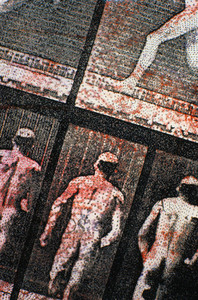As reported online on 28 February 2010 in Nature Chemical Biology, Professor Lai-Xi Wang, Professor Markus Aebi and colleagues describe a new bacterial method for producing homogeneous eukaryotic N-glycoproteins.
New method for producing human-like glycosylated MAbs
Biosimilars/Research
|
Posted 11/03/2010
 0
Post your comment
0
Post your comment

The method involves engineering and functional transfer of the Campylobacter jejuni glycosylation machinery in Escherichia coli to express glycosylated proteins with the key GlcNAc-Asn linkage. The bacterial glycans were then trimmed and remodelled in vitro by enzymatic transglycosylation to fulfil a eukaryotic N-glycosylation. It provides a potentially general platform for producing eukaryotic N-glycoproteins.
“This combined method may provide an efficient way to produce tailor-made glycoprotein drugs such as monoclonal antibodies,” explained Professor Lai-Xi Wang of the University of Maryland, US, to Mr Andy Extance of Chemistry World. As glycoproteins, today monoclonal antibodies' activity can be inconsistent because the glycan - or polysaccharide - parts they bear vary. “Glycoproteins are produced as mixtures, in vivo,” Professor Wang explains. “Only some of the glycoforms are really active.” Homogeneously glycosylating proteins with active glycans should produce more potent drugs.
Usually, benign Escherichia coli gut microbes are already used in industry to produce proteins but not glycoproteins, as they are unable to add function-modulating sugars. “Bacteria usually do not have protein glycosylation machinery,” Professor Wang explained. However, Professor Markus Aebi of the Swiss Federal Institute of Technology (ETH) in Zurich discovered that hostile C. jejuni bacteria did possess the unusual ability to attach sugars to proteins. Unfortunately, C. jejuni-produced glycoproteins normally trigger an immune response in humans. That is because the bacterial N-glycan, an alpha-linked N-acetyl galactosamine oligosaccharide, attaches to proteins' asparagine residues through an unusual aminosugar called bacillosamine that makes it unlike human glycans. Professors Aebi and Wang's teams engineered the glycosylation genes before transferring them into E. coli, to change the first sugar attached to asparagine into N-acetylglucosamine commonly found in our bodies. Then, using in vitro enzymatic methods, they trimmed and replaced the N-acetyl galactosamine residues with their chosen N-glycans for homogeneous 'humanised' glycosylation.
“Being able to express proteins in Escherichia coli is easy and much cheaper,” says Dr Antony Fairbanks of the University of Canterbury, New Zealand. However, Dr Antony Fairbanks, who co-founded UK drug-targeting company Glycoform, notes that while this method succeeds with a C. jejuni glycoprotein, it glycosylated immunoglobulin G antibodies common in humans less completely.
Reference:
Flavio Schwarz, Lai-Xi Wang, Markus Aebi et al. A combined method for producing homogeneous glycoproteins with eukaryotic N-glycosylation. Nature Chemical Biology Published online: 28 February 2010.
Andy Extance. Bacterial mix sweetens biodrug synthesis. Chemistry World. 2010 March 1.
Source: Nature Chemical Biology ; Chemistry World
News
FDA approves six denosumab biosimilars
EMA recommends approval for four biosimilars targeting three therapies
General
Samsung Bioepis wins Pyzchiva case; Regeneron patent rulings threaten foreign biosimilars
Chinese biosimilars go global: growth, partnerships, and challenges
What is the future for the US biosimilar interchangeability designation

Biosimilars/Research Posted 05/06/2025
Biosimilar clinical efficacy studies: are they still necessary?

Biosimilars/Research Posted 27/05/2025
The best selling biotechnology drugs of 2008: the next biosimilars targets








Post your comment